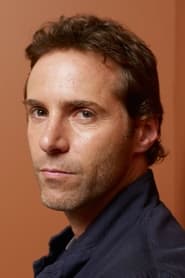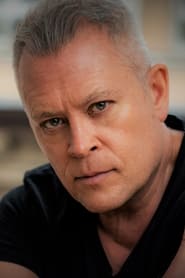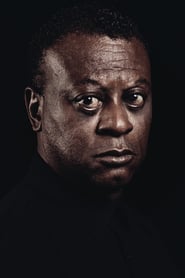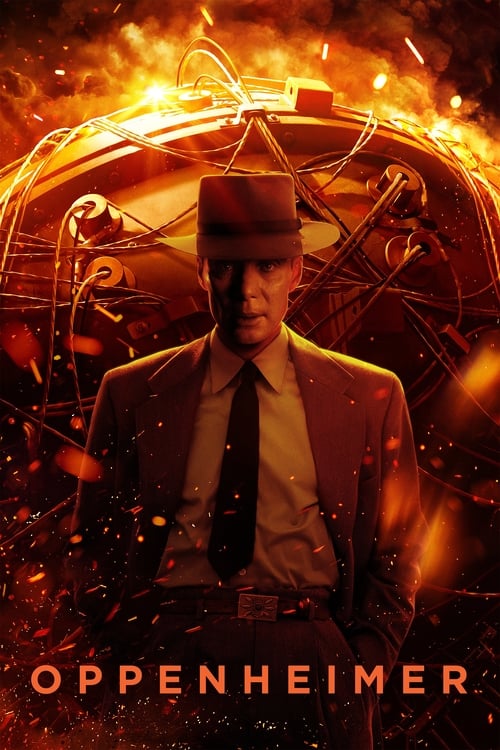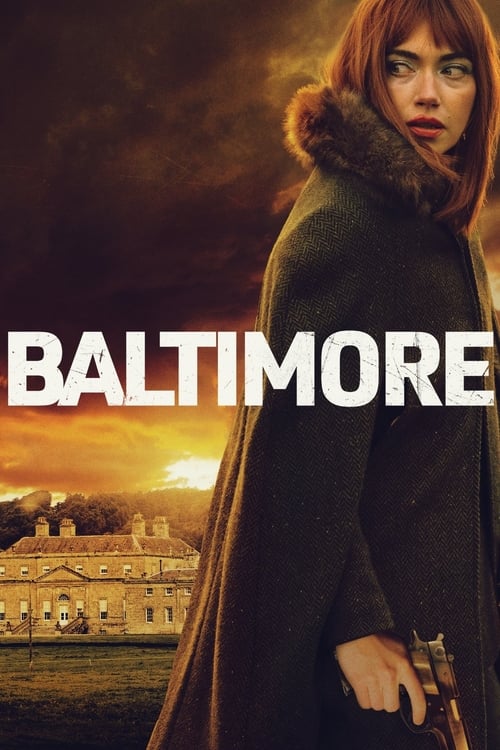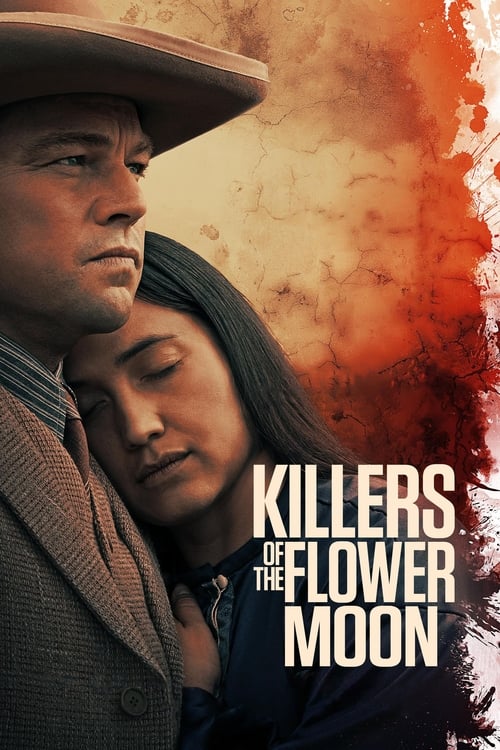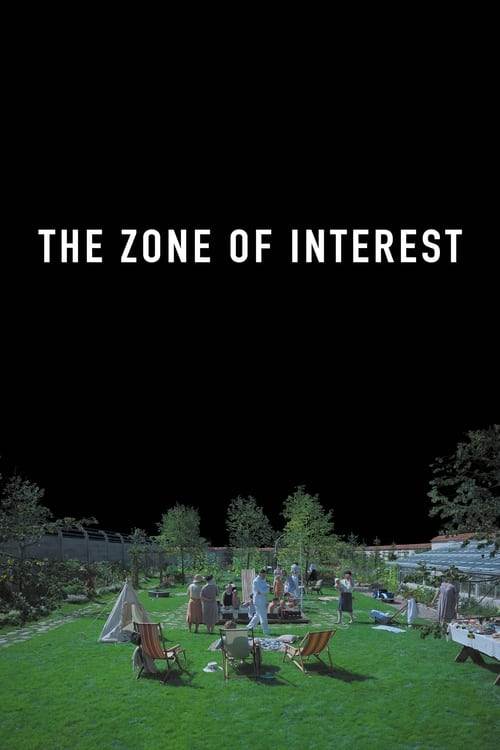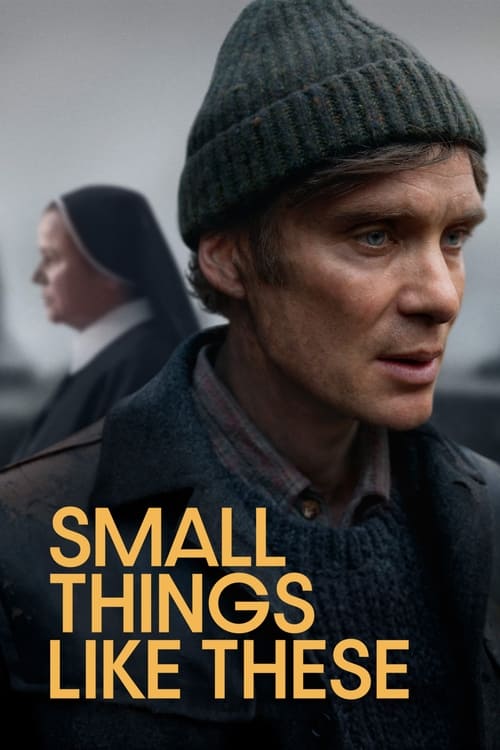
Ask Your Own Question
What is the plot?
The film opens in the 1940s with immigration paperwork: a young woman, Zsófia, sits for questioning at a border control booth. The scene cuts to a ship cutting into New York Harbor; László Tóth disembarks among a throng of refugees and stands on deck, speechless at the sight of the Statue of Liberty. A written voiceover of his wife Erzsébet's letters runs against the images of his arrival as he steps onto American soil and begins the search for the family he was torn from in wartime Budapest.
In 1947 László travels to Philadelphia to find his cousin Attila. Attila has changed his name and life: he lives with a Catholic wife, Audrey, and runs a modest furniture business. Attila tells László that Erzsébet and Zsófia are alive somewhere in Europe, and he offers his cousin a place to stay and work. László takes a job helping Attila on carpentry and renovation assignments. Attila brings László to a client, Harry Lee Van Buren, who has organized a surprise -- he wants his father to find a renovated study converted into a library in the family's country mansion near Doylestown. László assembles a crew and they set to work under a brutal deadline. They trip over setbacks: scaffolding mishaps, a dome frame dropped and shattered, the constant pressure of finishing before the elder Van Buren's return. When Harrison Lee Van Buren Sr. arrives unexpectedly with his ailing mother, he explodes at the scene: László and Attila are berated for the perceived sloppiness. Harry refuses to pay for the job and Harrison orders the men off the property. Back at Attila's house, Audrey makes a scene after a night of drinking, accusing László of making advances on her; Attila, convinced and ashamed, demands László leave his home, and the relationship between the cousins collapses.
The years that follow show László adrift. He moves into a charitable church shelter and bonds with Gordon, an African-American laborer struggling to raise a small son. László's past as an architect is buried by his growing dependence on heroin; he seeks work where he can and resorts to coal-loading labor at a shipyard. One day Harrison finds him there. Harrison, having seen photographs of László's prewar buildings and having heard praise for the library László put together, is moved by the evidence of László's talent. He pays László the wages previously withheld and invites him to a gathering in his honor. At the party Harrison speaks at length about his devotion to his late mother, Margaret Lee Van Buren, and then announces that he is commissioning László to design a new community center in her memory: a complex that will include a library, theater, gymnasium and chapel. Harrison promises largesse and legacy. He places László on the project and offers him housing on site; he uses his lawyer to begin paperwork to bring Erzsébet and Zsófia to America.
László accepts and immediately immerses himself in the task. He moves to the construction grounds, recruits men to the crew -- including Gordon -- and creates dozens of jobs for the project. The building process unfolds under László's watch: he oversees stone deliveries, supervises concrete pours, draws models and circulates plans. Yet friction emerges. Harrison hires consultants and contractors -- including Leslie Woodrow and later a designer named Jim Simpson -- who challenge László's aesthetic and costlier material choices. Disagreements escalate into public confrontations; Jim shoves László to the ground after accusing him of being obstructive, and Leslie arranges meetings behind László's back to alter the designs in order to stay on budget. Harry Lee, the younger Van Buren, never quite embraces László. He derides him privately and tells others that the family merely "tolerates" László; he also makes crude remarks about Zsófia's presence, which László rebukes angrily.
Materials arrive by rail for the project, but a train hauling essential supplies derails. Two brakemen are injured and hospitalized. Harrison, enraged at the publicity risk and the legal exposure, halts construction abruptly and dismisses much of the crew. The owners insist on cutting costs and on substituting cheaper stone and finishes than those László specified. László, exhausted and humiliated, returns home and smashes the plaster model he has been refining for months.
In 1953 Harrison, after a pause, follows through on his promise to bring László's family to America. At the train station László stands with Maggie Lee -- Harry's twin sister -- and the Van Buren lawyer when Erzsébet and Zsófia step down. The reunion overwhelms László: Erzsébet has become frail and requires a wheelchair due to severe osteoporosis; Zsófia has been silenced by trauma and does not speak. Over dinner at the Van Buren estate Erzsébet explains that she was a journalist back home. That night she asks to be intimate with László; fearing he might harm her, he pauses, but she takes his hand and tends him, tells him she has visions of women he has been with and says she forgives him.
Work on the Van Buren Institute restarts. László continues to push for uncompromised materials and for his brutalist approach -- heavy concrete, raw stone, an austere geometry meant to endure. Harrison insists on stewardship of the budget and brings in his own teams. László agrees to absorb additional costs himself by working unpaid, but tension mounts. Harry scorns him in private and publicly humiliates him; the Van Buren project operates under a pressure of prestige and status that undermines László's authority on site. László grows more short-tempered and more reliant on drugs to steady him through long nights of drafting and resolving construction crises. Gordon, who works under László, also begins to use heroin, under László's influence.
When the project finances become strained again, Harrison takes László to Italy to inspect marble quarries in Carrara. They meet Orazio, a local contact, and examine slabs beneath a foggy sky. During the trip László is weakened by withdrawal and intoxication. Harrison, drunk and belligerent, attacks László inside the quarry compound. Harrison sodomizes László in a violent abuse of power; he showers László with invective, calling him a parasite and asserting cultural superiority. László is left physically violated and emotionally shattered. He returns to the site in a daze and begins to unravel.
Back in America his behavior deteriorates. He lashes out at laborers, fires a young worker for playing with scaffolding and dismisses Gordon after an argument. He becomes capable of cruel disciplinary choices he once would have avoided. He tells Erzsébet that he and people like them are not wanted in America and grows intensely paranoid about the fragility of their place in the country. Erzsébet's illness worsens: she endures crippling pain and cannot obtain her usual medication because Zsófia is not present to administer it one night. Desperate to relieve her, László injects Erzsébet with heroin to alleviate the agony. She suffers a near-fatal overdose; László races her to a hospital, sits through the night at her bedside and watches doctors stabilize her. Erzsébet regains consciousness and, shaken, she comes to a painful understanding of László's world-weariness. She agrees with him that America has been inhospitable to them and begins to consider a life elsewhere.
Zsófia recovers her voice in the years that follow. She marries Binyamin, a man she meets in New York, and becomes pregnant. She tells her parents that she and Binyamin plan to make Aliyah and move to Jerusalem; she wants them to join her there. Erzsébet and László argue about faith, identity and purpose. Erzsébet, who converted to Catholicism to be with László earlier, chastises her daughter over religious practice but is also convinced by Zsófia that her talents are wasted in her job writing a woman's column for a newspaper. Zsófia presses her parents again to immigrate to Israel, to which they respond with conflicted hesitation.
Harrison restarts the Van Buren Institute construction a second time and rehiring László. The site resumes activity with László in a supervisory role, but his temperament is brittle. He becomes harsh with his crews and continues to alienate allies. The clash with Harrison's chosen consultants persists as they continue to cut corners. László's leadership style hardens into a volatile mixture of genius and destructiveness. One afternoon after another confrontation, László confesses to Erzsébet what happened in Carrara. Horrified, Erzsébet chooses to confront Harrison directly.
At a Van Buren business meeting Erzsébet wheels herself into the room and accuses Harrison of having raped László. Harrison denies the accusation loudly. Harry reacts with fury: he seizes Erzsébet and drags her out of the gathering. Maggie Lee apologizes profusely to Erzsébet and attempts to ease the situation. Harrison then disappears from view; Harry and others search the grounds of the estate frantically. They comb the building, the surrounding woods and the construction site, calling his name. The film portrays the search and the panic, and it ends that sequence by implying Harrison's death: he cannot be located, and those searching suggest that he has been found dead, though no on-screen scene shows who caused his death or the precise manner in which he died. The Van Buren family reels from both the accusation and the loss.
László and Erzsébet conclude that they would prefer a fresh start: after the overdose scare and the confrontation at the Van Buren house, they agree to leave America. Zsófia and Binyamin complete their move to Jerusalem; Zsófia becomes a mother and settles into a life in Israel. László continues to work in architecture sporadically and over the decades builds a body of projects; the Van Buren Institute is halted, reworked and delayed but the building process continues in fits and starts. The narrative charts time jumps: László works as a draftsman in Manhattan in the late 1950s, living a life of diminished acclaim but occasional recognition.
Erzsébet's health declines over the years and she dies in 1980. The film moves immediately to a Venice architectural retrospective that same year. László is old; he is wheeled into the exhibition by his niece Zsófia's now-adult daughter. A catalogue of his works hangs in the show: projects around the world, photographs of reinforced concrete and stark geometric spaces. The Van Buren Institute is on display as part of his oeuvre -- the building that had been stalled begins to appear completed in the record, with final construction credited to a later date in the 1970s and the finished center opening years after László's initial involvement. At the Venice Biennale Zsófia, no longer the mute child of the early scenes, steps forward to address the assembled guests. She speaks about her uncle's designs; she explains that in the Van Buren Institute he arranged certain spatial sequences and material choices so the interior would evoke the memory of Buchenwald and Dachau -- concrete volumes that force a visitor's body and attention into specific movements and encounters. She wheels an elderly, incapacitated László through the room to underline her remarks. In her closing words she quotes something László once told her during a fraught earlier season of life: "No matter what the others try and sell you, it is the destination, not the journey."
The film ends with that speech and the image of László, frail and silent, moved through the retrospective he has, in the end, survived to see assembled in honor. The Van Buren Institute stands in the archival photographs as both a realized commission and an object that absorbed a lifetime of conflict, and Erzsébet's absence and Harrison's unresolved disappearance hang over the final frame as the credits begin to roll.
What is the ending?
At the end of The Brutalist (2024), Erzsébet confronts Harrison Van Buren about his sexual assault on her husband László. Harrison then disappears, his fate left ambiguous. The film then jumps to 1980 at the Venice Biennale, where a retrospective of László's architectural work, including the Van Buren Institute, is unveiled. Now wheelchair-bound, László listens as his niece Zsófia delivers a speech revealing that his designs incorporate the footprints of concentration camps, transforming personal trauma into art. The film closes with Zsófia quoting László's mantra: "No matter what the others try and sell you, it is the destination, not the journey," followed by a low-fi disco tune rolling into the credits.
The ending unfolds in a series of distinct scenes:
-
Erzsébet's Confrontation: Erzsébet directly confronts Harrison Van Buren about his sexual assault on László. This confrontation is a pivotal moment where the abuse of power by Harrison is exposed. Following this, Harrison vanishes from the narrative, and the film does not clarify what ultimately happens to him, leaving his fate ambiguous.
-
Time Jump to 1980 Venice Biennale: The story then leaps forward several decades to 1980. László, now an older man confined to a wheelchair, attends a major retrospective exhibition of his architectural work at the Venice Biennale. This event is a public recognition of his career and legacy.
-
Zsófia's Speech: At the Biennale, Zsófia, László's niece, delivers a moving speech about his work. She reveals that László's architectural designs, particularly the Van Buren Institute, subtly incorporate the footprints of concentration camps. This artistic choice symbolizes how László transformed his traumatic past into enduring architectural expression.
-
László's Mantra and Closing: Zsófia closes her speech by quoting László's personal mantra: "No matter what the others try and sell you, it is the destination, not the journey." This line encapsulates a key thematic element of the film. The scene fades out as a low-fi disco tune begins, playing over the credits, providing an unconventional and somewhat ironic closure to the epic drama.
Fates of Main Characters at the End:
-
László Tóth: He survives into old age, wheelchair-bound, and is honored for his architectural legacy. His work is recognized as a profound artistic statement shaped by his Holocaust experiences.
-
Erzsébet Tóth: She remains a strong figure who confronts Harrison's abuse, standing up for her husband. Her role in the ending is crucial in exposing Harrison's wrongdoing.
-
Harrison Van Buren: After the confrontation, he disappears from the story, and his fate is left unknown, symbolizing perhaps the elusive and destructive nature of his power.
-
Zsófia: She emerges as a voice of remembrance and interpretation, delivering the speech that frames László's work within the context of trauma and survival.
This ending scene-by-scene narrative highlights the film's focus on the intersection of personal trauma, artistic expression, and the complex legacies of survival and power.
Is there a post-credit scene?
There is no post-credit scene in the 2024 movie The Brutalist. The end credits run for about five minutes, but nothing extra appears during or after them.
The film concludes with a time jump and an epilogue set at a retrospective of László Tóth's work, but this is part of the main narrative, not a post-credit scene.
How does László Toth initially meet Harrison Lee Van Buren?
The film does not explicitly detail the initial meeting between László Toth and Harrison Lee Van Buren. However, it is established that Harrison recognizes László's talent and offers him a significant opportunity to design a community center, which becomes a pivotal point in their relationship.
What is the nature of Harrison Van Buren's relationship with László Toth?
Harrison Van Buren's relationship with László Toth is complex and controlling. Harrison uses his wealth and influence to manipulate László, initially offering him a chance to rebuild his life and career by commissioning a grand architectural project. However, this relationship quickly turns exploitative, with Harrison exerting significant control over László's work and personal life.
How does Erzsébet Toth fit into the story?
Erzsébet Toth, played by Felicity Jones, is László's wife. She and their niece Zsófia eventually join László in America after he establishes himself there. Erzsébet plays a crucial role in supporting László through his struggles with Harrison Van Buren and is also a victim of Harrison's abuse, confronting him about his actions.
What role does Zsófia play in the story?
Zsófia, played by Raffey Cassidy, is László's niece. She joins her aunt and uncle in America and becomes a significant figure in the story. Zsófia delivers a poignant speech at the 1980 Venice Biennale, highlighting the impact of László's architectural work and its connection to his past experiences.
How does László's past as a Holocaust survivor influence his character and actions?
László's past as a Holocaust survivor deeply influences his character and actions. His experiences have left him severely traumatized, and he struggles to rebuild his life in America. His architectural work becomes a way to express his trauma and create something enduring, reflecting his desire to leave a lasting legacy despite the hardships he has faced.
Is this family friendly?
The movie "The Brutalist" (2024) is not family-friendly due to several potentially objectionable or upsetting scenes and themes. Here are some aspects that might be disturbing for children or sensitive viewers:
-
Sexual Content and Nudity: The film includes graphic sex scenes with full female nudity and a graphic silent era pornographic movie is shown. These scenes are explicit and may be uncomfortable for some viewers.
-
Rape and Sexual Violence: There are depictions of rape, including a scene where a man is raped by another man. Although the scene does not show graphic nudity, it is drawn-out and focuses on the act, which can be disturbing. Additionally, there is an implied non-consensual sexual encounter involving a teenage girl.
-
Violence and Gore: The movie features moderate violence, including a man being punched in the face and a disabled woman being knocked off her walker and dragged across the floor.
-
Drug Use and Alcohol: The film includes severe depictions of drug use and alcohol consumption, which might be unsettling for some viewers.
-
Emotional Themes: The movie explores heavy themes such as trauma, struggle, and the complexities of post-war life, which can be emotionally taxing for sensitive viewers. Suspenseful music and certain scenes may also contribute to an unsettling atmosphere.
Overall, "The Brutalist" deals with mature and intense subjects that are not suitable for children or those who prefer less graphic content.










